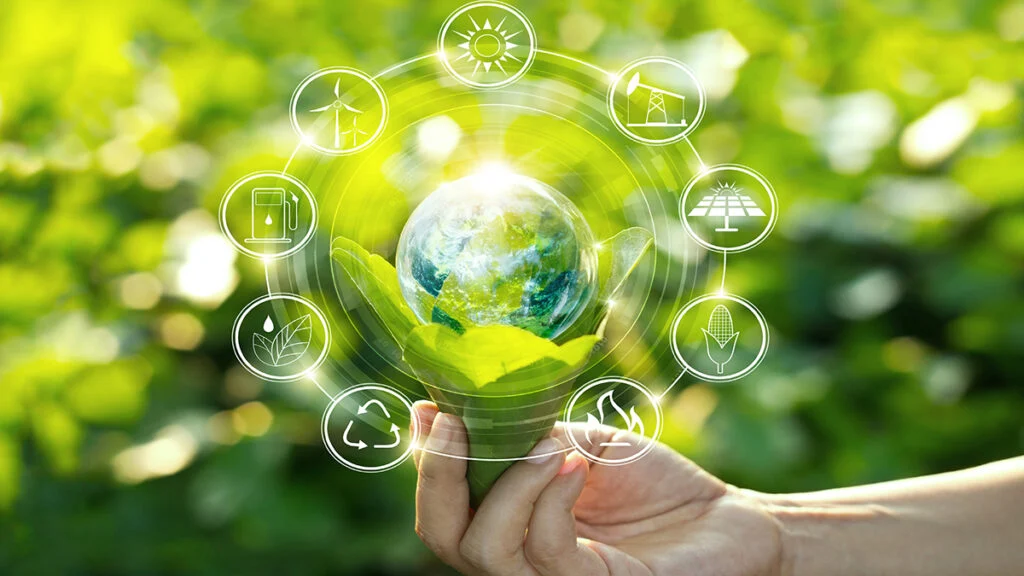Green Technology: Innovations for a Sustainable Future is an emerging field that focuses on creating innovative solutions to address environmental challenges. This includes the development of renewable energy sources, energy-efficient technologies, and sustainable materials. The goal of green technology is to minimize the impact of human activities on the environment and promote a more sustainable way of living. Companies and researchers are constantly exploring new ways to harness the power of nature and reduce our reliance on non-renewable resources, in order to create a healthier and more sustainable future for the planet.
In addition to renewable energy sources and energy-efficient technologies, Green Technology: Innovations for a Sustainable Future also encompasses eco-friendly transportation, waste management, and water conservation. These alternative approaches to traditional practices are designed to reduce pollution, conserve natural resources, and promote a more sustainable way of life. By embracing green technology, individuals and businesses can contribute to a healthier planet and a more sustainable future for generations to come. This growing field offers a wide range of opportunities for innovation and collaboration, as we work towards a more sustainable and environmentally-friendly world.
1. What is Green Technology?
Green technology, also known as environmental technology or clean technology, refers to the development and application of products, equipment, and systems that are used to conserve the natural environment and resources, as well as to minimize the negative impact of human activity on the planet. This includes technologies that focus on renewable energy sources, recycling and waste management, energy efficiency, and sustainable development.
Green technology aims to address environmental challenges such as climate change, air and water pollution, deforestation, and depletion of natural resources. It encompasses a wide range of innovations and practices that promote a more sustainable way of living and doing business, with the goal of creating a cleaner, healthier, and more resource-efficient world for future generations.
2. Importance of Green Technology
The importance of green technology lies in its potential to mitigate the environmental impact of human activities and address pressing global issues such as climate change and resource depletion. By promoting the use of renewable energy sources, reducing waste and pollution, and improving energy efficiency, green technology can help to reduce greenhouse gas emissions, conserve natural resources, and protect ecosystems.
Furthermore, green technology offers economic and social benefits by creating new job opportunities, stimulating innovation and investment, and improving public health and well-being. It also provides a pathway towards achieving sustainable development goals and building resilient and environmentally conscious societies.
3. Key Innovations in Green Technology
Green technology encompasses a wide range of innovations across various sectors, including energy, transportation, construction, agriculture, and waste management. Some key innovations in green technology include the development of renewable energy sources such as solar, wind, and hydroelectric power, as well as advancements in energy storage and smart grid technologies.
Other notable innovations include the design and construction of green buildings that prioritize energy efficiency and sustainable materials, the introduction of electric and hybrid vehicles to reduce carbon emissions from transportation, and the implementation of advanced recycling and waste-to-energy technologies to minimize the impact of waste on the environment.
4. Challenges and Opportunities in Green Technology
While green technology offers promising solutions to environmental and sustainability challenges, it also faces certain barriers and obstacles. These include the high initial costs of implementing green technologies, the need for supportive government policies and regulations, as well as the resistance to change from established industries and practices.
However, there are also significant opportunities in the green technology sector, including the potential for job creation, economic growth, and technological innovation. As the demand for sustainable solutions continues to grow, there is increasing investment and support for green technology research and development, as well as a growing market for environmentally friendly products and services.
5. Role of Green Technology in Climate Change Mitigation
Green technology plays a crucial role in mitigating climate change by reducing greenhouse gas emissions and promoting carbon-neutral or carbon-negative practices. This includes the development and deployment of renewable energy technologies such as solar panels, wind turbines, and bioenergy systems, which can help to shift away from fossil fuel dependency and reduce the carbon footprint of energy production.
Additionally, green technology contributes to climate change mitigation through energy efficiency measures, sustainable transportation solutions, and carbon capture and storage technologies. By embracing green technology, societies can work towards achieving climate targets and transitioning to a low-carbon and resilient future.
6. Green Technology and Sustainable Development Goals
Green technology is closely linked to the United Nations Sustainable Development Goals (SDGs), as it provides pathways for achieving environmental sustainability, economic prosperity, and social equity. By promoting clean energy, water conservation, sustainable cities, and responsible consumption and production, green technology contributes to several SDGs, including affordable and clean energy, sustainable cities and communities, and climate action.
Furthermore, green technology supports the goals of ending poverty, ensuring food security, and promoting health and well-being, by creating opportunities for inclusive and sustainable economic growth, improving resource efficiency, and reducing the negative impact of human activities on the environment and communities.
7. Future Trends in Green Technology
Looking ahead, the future of green technology is likely to be shaped by advancements in digitalization, artificial intelligence, and the Internet of Things (IoT), which can optimize energy and resource management, enhance environmental monitoring, and enable more sustainable practices in various industries. There is also a growing emphasis on circular economy principles, which prioritize the reuse, remanufacturing, and recycling of products and materials to minimize waste and maximize resource efficiency.
Moreover, emerging technologies such as hydrogen fuel cells, advanced biofuels, and sustainable agriculture practices are expected to play a significant role in the transition towards a more sustainable and low-carbon economy. The integration of green technology into urban planning, infrastructure development, and industrial processes will also be key trends in shaping a more sustainable future.
8. Adoption of Green Technology in Businesses and Communities
Businesses and communities are increasingly recognizing the importance of integrating green technology into their operations and lifestyles. Many companies are investing in renewable energy systems, energy-efficient technologies, and sustainable practices to reduce their environmental impact and meet consumer demand for eco-friendly products and services. Additionally, governments and local authorities are implementing policies and incentives to encourage the adoption of green technology, such as tax credits for renewable energy investments and regulations for sustainable building standards.
At the community level, initiatives such as community gardens, zero-waste programs, and sustainable transportation options are gaining traction as people become more aware of the benefits of green technology in creating healthier and more resilient communities. Through collaboration and collective action, businesses and communities can drive the widespread adoption of green technology and contribute to a more sustainable future for all.
Green Technology Innovations
| Technology | Description |
|---|---|
| Solar Panels | Convert sunlight into electricity, reducing reliance on fossil fuels |
| Wind Turbines | Generate electricity from wind power, a clean and renewable resource |
| Hybrid Cars | Combine a traditional internal combustion engine with an electric propulsion system, reducing emissions |
| Smart Grids | Utilize digital technology to improve the efficiency and reliability of the electrical grid |
| Green Building Materials | Use sustainable and environmentally friendly materials for construction |



